The great white shark's reputation is one to be reckoned with.
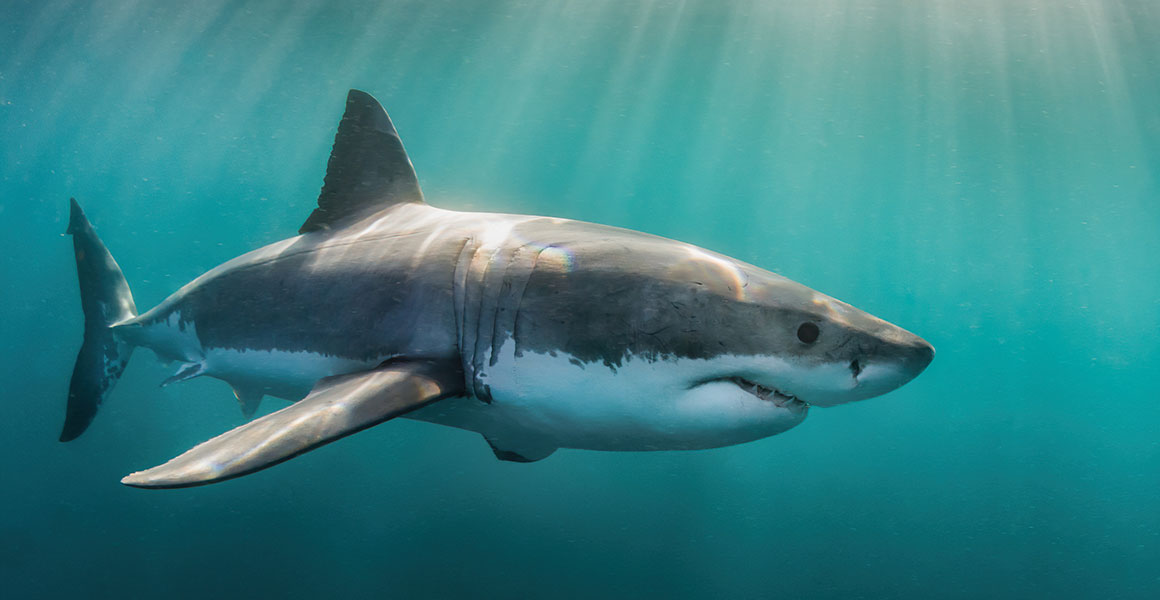
A great white shark swimming near the coast of South Africa © Fiona Ayerst/ Shutterstock
As stars of the silver screen, these large, toothy sharks have been portrayed as a ferocious beach menace, but in reality they have suffered at human hands.
Separate facts from fiction in this portrait of the world's largest predatory fish.
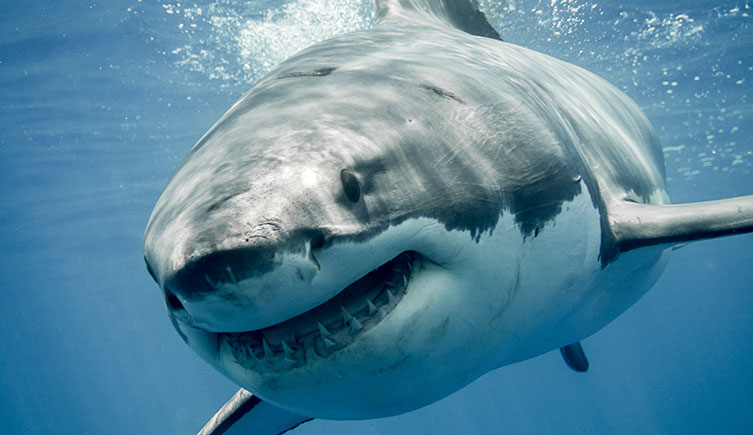
A great white shark showing off its multiple rows of sharp teeth. © Ramon Carretero/ Shutterstock
Great white shark fast facts
- Scientific name: Carcharodon carcharias
- Family: Lamnidae (mackerel sharks)
- Maximum length: 6 metres
- Maximum weight: 2.27 tonnes
- Diet: varied, mostly fish and seals but will also scavenge
- Estimated lifespan: 73 years
- Habitat: shallow and coastal waters, and migrations across open ocean
- IUCN Red List category: vulnerable
Do great white sharks attack humans?
The first thing to tackle with great white sharks, or white sharks as they are more commonly known by scientists, is the enduring myth that they are dangerous man-eaters.
White sharks are among the top three shark species most likely to injure humans, alongside tiger sharks and bull sharks. But only 57 shark bites were recorded in 2022, and that's across all shark species.
There are far more survivors of white shark bites than there are fatalities. International Shark Attack File reports that fewer than 17% of the unprovoked attacks by this species have been fatal since records began in 1580.
Scientists aren't sure why great whites usually spit humans out after a 'sample bite'. Some think it might be that we don't contain enough calories, or that the sharks are just curious but can only investigate with their sensitive teeth and jaws.
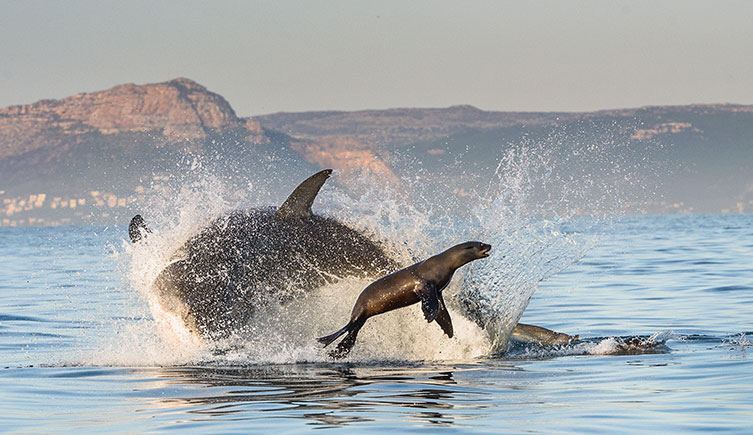
A shark breaches as it hunts a sea lion off the coast of South Africa © Sergey Uryadnikov/ Shutterstock
What do great white sharks eat?
White sharks enjoy a varied marine diet, but they are essentially carnivores.
Young great whites prey on fishes from the mid-ocean down to the sea floor. They usually move on to bigger, higher calorie fare nearer the surface as they grow.
The typical diet of an adult white shark centres on seals or sea lions. Rays, other sharks, tuna, dolphins and sometimes squid and turtles can also be on the menu. Both adults and juveniles will also scavenge from fishing nets and dead whale carcasses. They also feed on live whales, with scientists revealing the first recorded evidence of a white shark feeding on a humpback whale in 2020.
Such flexibility shows these sharks can make the most of whatever feeding opportunities they encounter, and possibly avoid conflict and competition with their own kind.
How do great white sharks hunt?
Great white sharks are apex predators, which means they are at the top of the food chain. They have evolved some amazing adaptations to help them hunt.
White sharks have streamlined, torpedo-shaped bodies. This allows them to move as fast as 40 kilometres per hour (25 miles per hour) in short bursts as they accelerate towards their prey.
The name 'white shark' refers to the colour of their bellies. Combined with their grey colouring on top, this works as effective camouflage whether their targets are looking up to the bright sky or down to the sea floor. This type of colouration is known as countershading.
White sharks can also stay warm thanks to a specialised web of capillaries in their swimming muscles known as a 'rete mirabile', which is Latin for 'wonderful net'. As cool, oxygenated blood headed towards the body passes warm, deoxygenated blood pushed to the gills, the heat transfers and returns to the muscles meaning the shark has more energy for hunting, even in cooler waters.
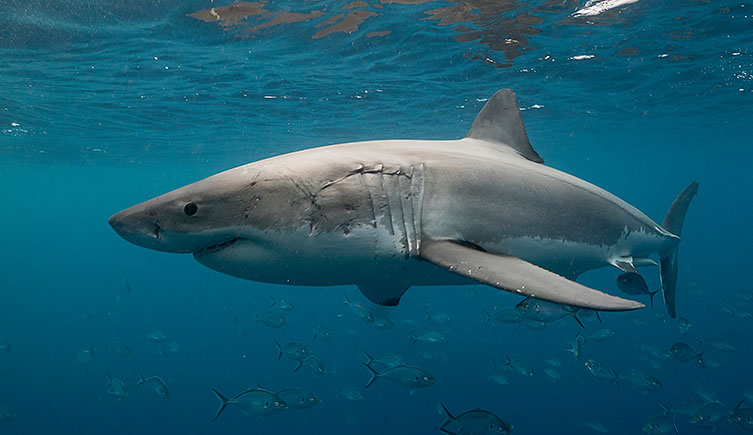
Great white sharks use countershading to help camouflage them from above and below. © wildestanimal/ Shutterstock
How far away can sharks smell blood?
You might be familiar with the saying that sharks can 'smell a drop of blood a mile away'.
This is actually considered an overstatement. Studies on species including lemon sharks and bonnethead sharks reveal that they can detect one drop of scent in a billion drops of water at best, which is about the same as any other fish species.
In white sharks, the olfactory bulb used to process smells accounts for 18% of total brain mass, the most of any shark species, suggesting that smell is particularly important to them.
Great white shark eyes
A white shark's eyes are relatively large for shark species. They're located on either side of the head, providing a wide field of vision.
Yet, in a 'virtual' shark visual system, researchers found that juveniles looking towards the surface of the water wouldn't be able to tell the difference between the silhouette of a human on a surfboard and that of a seal. This supports the theory that bite incidents may be the result of mistaken identity.
Can a great white shark hear sounds?
Shark ears are known to detect low frequency sounds, including the noises made by wounded prey.
The vibrations of animals moving through the water can also be picked up by specialised pores that run along a shark's sides, from snout to tail. This is known as the 'lateral line'.
Sharks also have electroreceptors in their skin, known as the 'ampullae of Lorenzini'. These detect the weak electrical field generated by all animals and may also help the shark locate itself in the Earth's magnetic field during long migrations.
Great white shark teeth
Once they have found their prey, white sharks use their most impressive feature: their teeth.
The great white shark's scientific name is Carcharodon carcharias. Both the genus and species name are derived from the Greek 'karcharos' which means sharp or jagged.
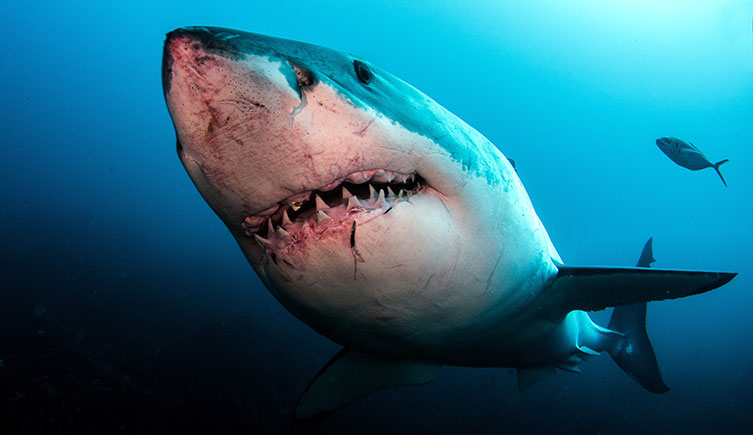
Great white sharks' scientific name Carcharodon carcharias is a reference to their sharp, serrated teeth. © Tomas Kotouc/ Shutterstock
White sharks have been observed delivering a sudden ram to their prey, followed by a bite and a side-to-side head shake to tear out a chunk of flesh.
White sharks have a total of around 50 'active' teeth. They also have up to five or six additional rows of teeth growing behind those, ready to take the place of any tooth that is damaged or breaks off.
Scientists have calculated that white sharks have one of the highest bite forces of any living animal. Estimated at 4,000 pounds of force per square inch, the white shark's bite is nearly 25 times more powerful than that of a human's.
At the Museum, some of our largest fish specimens are white sharks, as Senior Curator of Fish James Maclaine explains:
'Two of the largest fish specimens we have ever preserved have been white sharks - a 3.1 metre female and 2.4 metre male. These are now stored in tanks in our spirit building. These were donated to the Museum by the KwaZulu-Natal Sharks Board in South Africa in 2015 and will be used for scientific study.'
'We have a huge set of jaws from a white shark caught off Port Fairy in Australia during the 1830s. For a long time, these were considered to be from the largest white shark ever known and it was recorded as having been 36.5 feet (11 metres) long.'
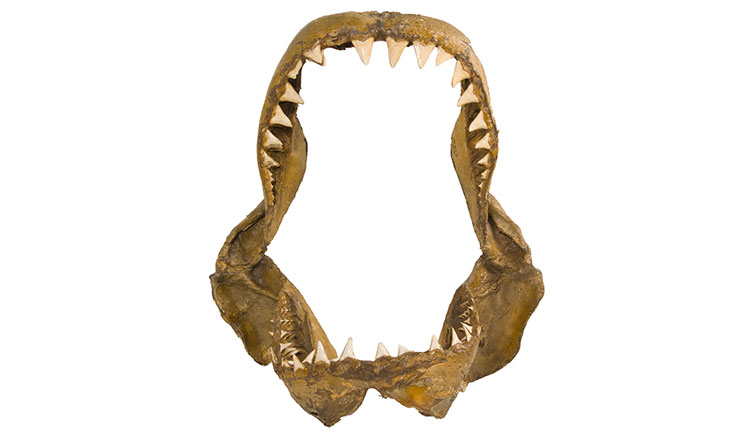
The jaws of a large great white shark caught off Port Fairy, Australia, in the 1830s. This specimen is housed in our fish collections.
However, the jaw was later re-examined by fish specialist Jack Randall, who found the earlier calculation was incorrect. He reported in 1973 that the jaws had actually belonged to a shark that was about five metres long.
How big is a great white shark?
Measuring a mature great white shark is a tricky task.
A laser system is a safe but expensive option. A measuring tape would mean getting perilously close to these formidable animals. Most current field records rely on eyewitness accounts, using comparisons with nearby objects such as boats to make an estimate, or analysis of photographs and films.
These techniques all carry a degree of inaccuracy. Even estimates made from shark remains can be wrong, as the Museum's jaw specimen shows.
Female white sharks average around 4.6 to 4.9 metres long and are larger than males.
In recent years, a shark nicknamed Deep Blue has been encountered off the coast of Oahu, Hawaii. There has been debate over her size with estimates ranging from 5.2 to 6.4 metres, potentially making her a record-breaker.
Great whites are the world's largest predatory fish, but they aren't the biggest sharks in the ocean. They are nowhere near the size of ocean giants such as the whale shark and basking shark, for example.
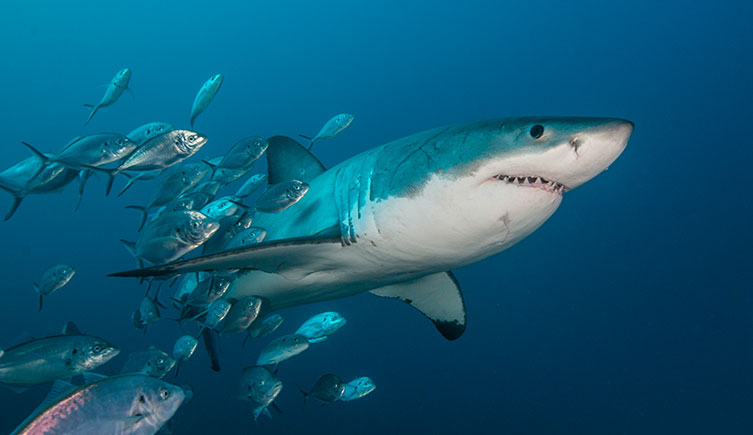
A great white shark surrounded by a school of smaller fish. This shark was photographed near the Neptune Islands in South Australia. © wildestanimal/ Shutterstock
Where does the great white shark live?
White sharks are a widespread species. They're mostly found in temperate areas including the coastal waters off South Africa, Australia, New Zealand, California, the north-eastern coast of the US and Canada, and the Pacific coast of Mexico.
Satellite tagging has revealed sharks in the Pacific making large-scale migrations from Hawaii to Mexico.
A female white shark holds the records for the fastest ever return migration by a marine animal. The shark swam from South Africa to Australia and back within nine months. This study also recorded the deepest known dive for a white shark to a depth of 980 metres.
There are white shark populations in both the Mediterranean and North Atlantic Ocean. British coastal waters also fall well within the range of temperatures encountered in the white shark's recorded range. With British waters home to 50% of the world's population of grey seals, which are an ideal food source for white sharks, it's perhaps surprising that there have been no confirmed sightings of these animals around the UK.
Their apparent absence may be due to declining numbers. Great white sharks are listed as vulnerable to extinction by the International Union for the Conservation of Nature (IUCN). It may also be that it is difficult to photograph this fast, elusive predator in our murky waters.
What threats do white sharks face?
Humans pose a bigger threat to sharks than the other way around.
Even before great white sharks shot to stardom in the 1970s thanks to the Jaws novel and its blockbuster film adaptation, they suffered persecution by trophy hunters.
As with so many animals that live near increasing human populations, their natural behaviour clashes with our pursuits, from fishing to recreation.
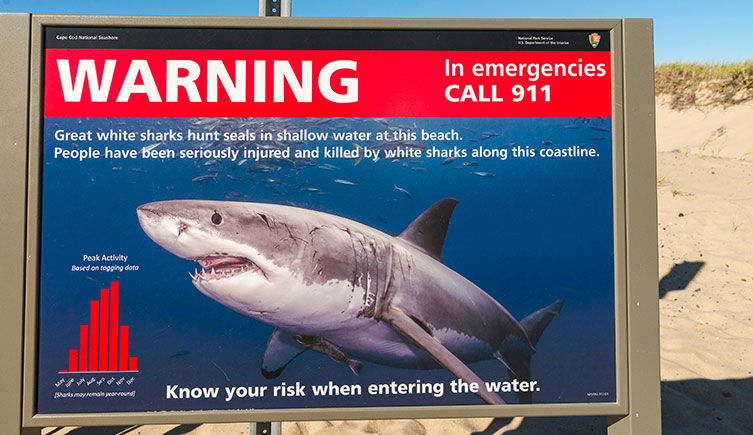
Visitors to a beach in Massachusetts, USA, are warned about the presence of great white sharks in the water © BAF Photography/ Shutterstock
These curious sharks are victims of bycatch when they become entangled in fishing nets.
Nets are also intentionally used in Australia and South Africa to keep sharks away from beaches popular with people. There are also programmes of shark-culling at swimming hotspots, whereby any sharks trapped in nets or caught on baited lines are killed.
White shark teeth are highly prized for decoration and jewellery. Their fins are used in traditional Chinese medicine and the notorious shark fin soup. Removal of fins for this soup is one of the biggest threats to all oceanic shark stocks.
Despite measures introduced in the 1990s to protect the species, populations are thought to have declined by 30-40% over the last three generations according to the IUCN.
White sharks are estimated to live up to 73 years. Females take 30 years to reach sexual maturity and the average reproductive cycle is thought to take two to three years. This means populations take a long time to recover when they are disturbed.
Sadly, the greatest white sharks may be a thing of the past. With the species not living to such advanced ages, consequently they are not reaching their maximum size.
Recent research has also shown that climate change is pressuring the sharks to adapt. As sea temperatures rise, great white sharks are moving into new regions, with knock-on effects for threatened species including sea otters.
How to celebrate sharks
It’s hard not to hear the ominous two-note Jaws theme when someone mentions great white sharks, but we are beginning to adopt a new tune.
After decades of discoveries revealing the complex behaviour of these amazing animals, even Jaws author Peter Benchley became a dedicated campaigner for shark protection. 'Sharks are nature at its most perfect. The most beautiful thing in the water you can imagine,' he declared in 2000.
White sharks are essential to ecosystems, preventing overpopulation by other species and limiting the spread of diseases by preying on weaker animals. There are international wildlife agreements to protect them, from improved record-keeping of catches to best practice for the safe release of sharks caught by accident. But conservationists are calling for more action.
Researchers are currently investigating safety measures for beachgoers that have less of a negative impact on shark species, including the use of drones to monitor shark populations from above.
You can help great white sharks by making your voice heard by those with the power to make change. Look out for campaigns like Shark Trust's Big Shark Pledge, and join likeminded people in advocating for a future where both people and sharks can thrive.
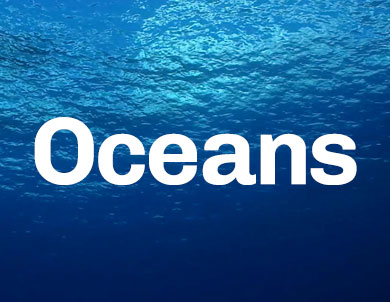
Discover oceans
Find out more about why we need to protect oceans and read about the pioneering work of our marine scientists.
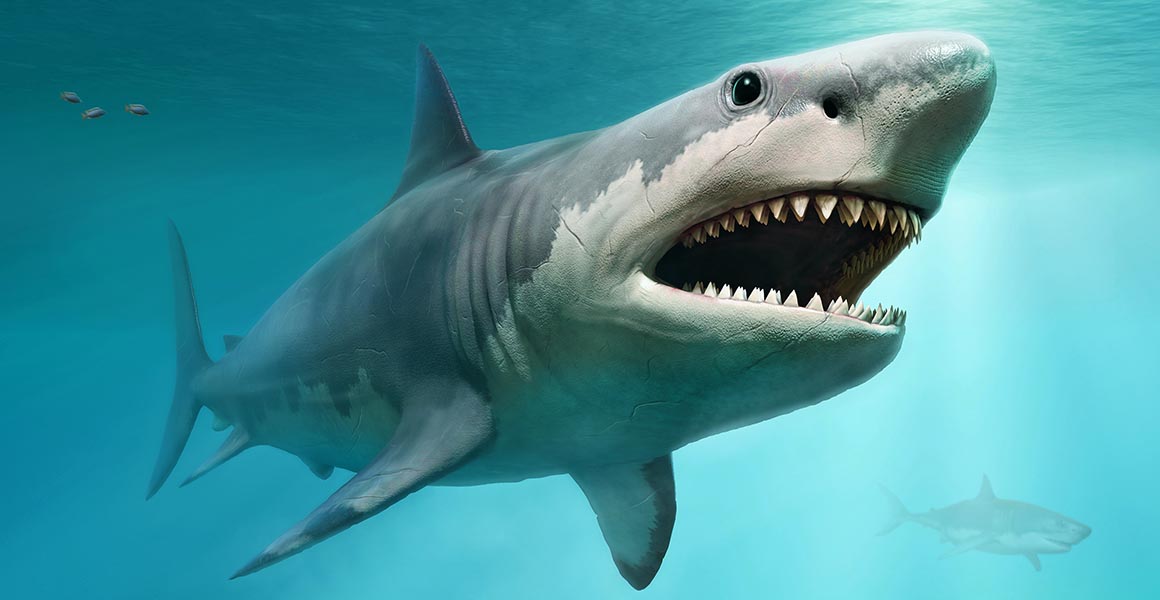
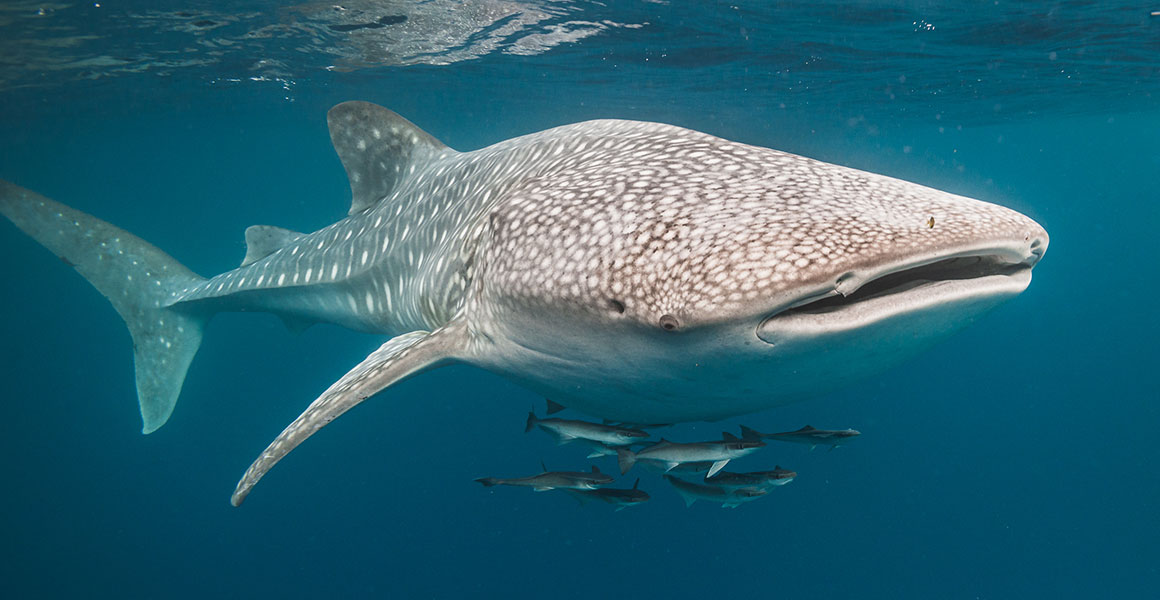
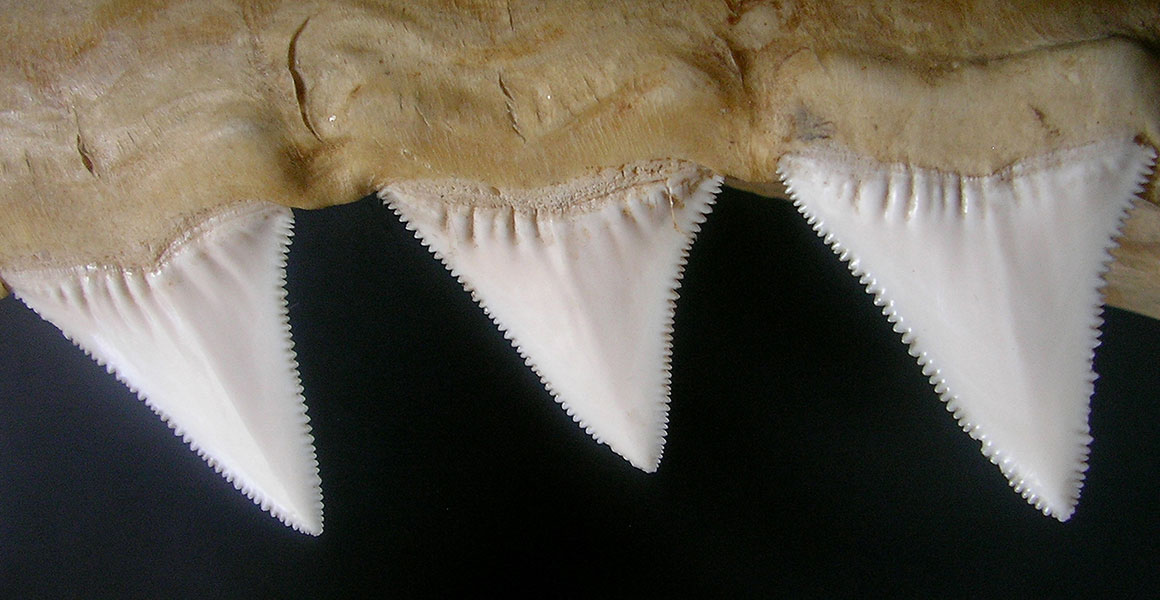
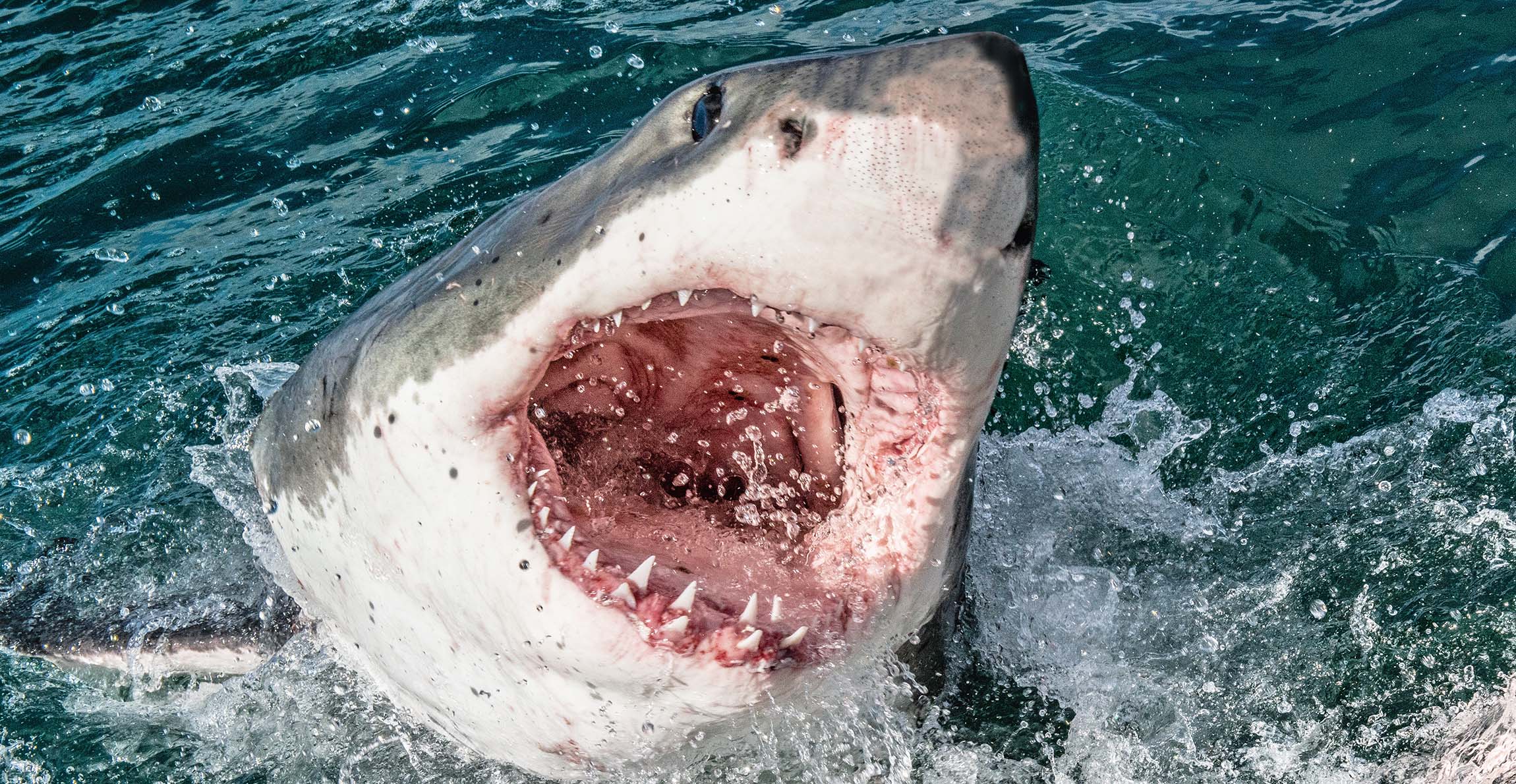
Don't miss a thing
Receive email updates about our news, science, exhibitions, events, products, services and fundraising activities. We may occasionally include third-party content from our corporate partners and other museums. We will not share your personal details with these third parties. You must be over the age of 13. Privacy notice.
Follow us on social media